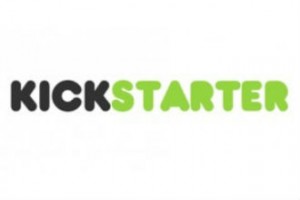 A love of the written word is a precious currency for any author but sadly, and we’ve checked with the bank on this, you can’t use it to pay your bills.
A love of the written word is a precious currency for any author but sadly, and we’ve checked with the bank on this, you can’t use it to pay your bills.
So if you’re longing to fulfil your creative destiny but haven’t landed that worldwide multi-million dollar advance from an eager publisher, how are you going to fund your writing dreams?
A new way to do business
Crowdfunding, that’s how. It’s a revolutionary way to raise funds from like-minded souls or fans and it’s becoming the favourite way to fast-track projects that might languish in limbo for years otherwise.
It’s certainly better than the alternatives that have traditionally been available to struggling creative types.
Once upon a time you either had to languish in your writing garret suffering for your art, dashing off paragraphs of prose in between shaky sips of water and nibbles of bread and dripping, hoping someone would notice you and your work.
Or you could figuratively pound the streets, approaching agent after agent, publisher after publisher, hoping someone would fund your creative dream. A tenacious approach, sure, but a long slow way to get your writing goals realised, with no guarantee of success.
Clearly the first option was never high on anyone’s list of preferred options, especially in this uber-connected age. But the second option was, and is, a reality for many who are holding day jobs as they eke out time to write and pursue their dream of getting their work in print.
But crowdfunding renders this model almost obsolete by cutting out the middlemen and women. It takes you straight to the people you want to reach. It still requires a good amount of preparation and a finely-tuned execution but, if done properly, it can reap rewards for the eager writer.
The nuts and bolts
So how does this revolutionary idea work?
Let’s say you have written a fantasy novel that has found favour with a fervent fanbase who are clamouring to know what happens next to the zombie princess, Vacanta, who is the heir to the kingdom’s throne. You want to get the next book in the trilogy published but simply don’t have the $3000 it will cost you to publish it. No problem. You can go straight to these self-same fans and ask them to fund the next chapter in Vacanta’s vague and bloodthirsty story.
Here’s what you do. You submit a well-thought out and articulated proposal via sites like Kickstarter, Indiegogo or Pozible, complete with a snazzy project page, a funding goal and a deadline. You outline exactly what you plan to write, and make it clear to those who positively respond to your request that they will get something in return. This can be anything from a limited edition signed version of the book to dinner with you to access to a specially written additional story. Whatever carrot you dangle before your eager fans, it needs to be something that they will not get otherwise.

What happens next depends on the site you use. With Kickstarter, people only pay if you reach your goal, which means that if you fall short, you get nothing. Hence the obvious need to make your pitch as compelling as possible.
On other sites like Indiegogo, people must still pay what they pledged, even if you fall short of your goal. So while you don’t get the full amount you asked for, you can still get some of the money, which can be useful if you want to recoup some of the money you needed to fund the project.

But regardless of the site that you use, the project must be worded well, and pitched directly to your fan base. You need to interact with them on the site once it’s posted and make sure they know you are actively involved in bringing the project to fruition. You just can’t sit back and let the money roll in because it is likely that if you do that, that’s exactly what won’t happen to it.
The rewarding side of creativity
So assuming you can get your fans enthused, the track record of many writers suggests you should reach you goal. Most writers do reach their goals, since the average amount requested is a conservative $3000, with many raising about $3600 from people eager to see their work sooner rather than later, according to Suw Charman-Anderson, who is a UK-based journalist, blogger and aspiring novelist. She raised close to $5000 to get her novelette, Argleton into print when it’s length, which sat awkwardly between a short story and a novel, precluded its publication by traditional means.
As Suw and others who write on the subject point out, offering a reward is integral to garnering more interest in your pitch. While fans will often support you regardless of any inducements, it doesn’t hurt to give them something unique that is only accessible if they support their favourite author.
“That’s a lesson I’ve tried to take to heart as I plan my next Kickstarter project. As a bookbinder as well as an author, I’m focusing in providing rewards that I hope people will adore.”
In the case of Argleton, supporters got anything from signed copies of the paperback version to behind the scenes updates to a lavish hardcover edition, depending on how much they pledged. Each pledge amount carried with its own rewards so fans got something regardless of what they could afford.
But however you structure your proposal, or what you offer, it pays to have some sort of fan base already in place. Or failing that, be able to mightily impress those who come across your project page, according to Lisa Dempster, Director of the Emerging Writers’ Festival.
“I think you either need to have a large following OR put up a project that has a huge, unique wow-factor. Either way people won’t pledge money unless they feel personally inspired by the project, I don’t think.”
So who wants to be a literary millionaire?
Her take on crowd funding pitches is given credence by the experiences of people like Rich Burlew a comic book artist who raised over $1 million USD from 12,797 backers in just 30 days for his The Order of the Stick Reprint Drive. Impressive any way you slice it, especially since the original amount requested was $57,000, but his success was largely leveraged off a sizeable fan base that was clamouring for his older comics to be consistently in print. Previously he had self-published the online comics in a paper format but found it difficult to keep his entire back catalogues available all the time. He couldn’t afford to print them himself but decided to take a chance that his fans’ enthusiasm would translate to real world financial pledges.

He might have done well regardless, but it’s arguable he wouldn’t have been as successful with a smaller less ardent fan base. Critical to his success too was offering these fans one-of-a-kind rewards they couldn’t get anywhere else. For instance everyone who pledged over $10 got a prequel story of the one of the major characters, which had not been available prior to that. Other fans with deeper pockets got magnets, special pdf downloads and even art prints of the entire cast.
In Suw’s opinion, writing on the Taleist blog on the issue of crowdfunding, this was the key to his success.
“What Burlew is producing is desirable. It’s not just stickers, postcards and unremarkable paperbacks or hardbacks. It’s something that his fans desperately want.”
Like Richard Burlew, Frank Chimero, with over 27,000 followers on Twitter, was well placed to make use of the crowdfunding model. His book, The Shape of Design, attracted pledges of just over $112,000 USD in 30 days, far in excess of the $27,000 he had originally requested.

Writing to excess
You may have noticed by the way that in both cases cited, that the authors raised more than they were looking for. So what happens to these funds?
In almost all cases, any excess funds were used to return something additional to the backers. For instance Richard Burlew used his surplus to print the entire back catalogue of his comics, which was far more than he had originally planned. Other authors make it clear they will use any money above and beyond the goal to fund future writing activities, promising extra unspecified goodies for their fans down the road.
The key thing is staying faithful with the fans. Each of these authors provided regular updates, specific dates on when the rewards would be available, and what would happen to money raised above and beyond the goal. It was their fans who had helped them achieve their goals and it was their fans who continues to be the lynchpins of their future success, and they well knew it.
The conclusion, says Suw, writing on the Forbes online site, is obvious.
“It’s not enough to write good stories. You need to manage a mailing list of fans, be on Twitter and/or Facebook, have a blog, and be willing to put in the hard graft required to build an audience.”
Build your base and they will fund
It makes sense that you should be connecting with your fans but as Suw makes clear, and the results of many crowdfunding initiatives bear out, you need people to know you, like your work, and want more of it to succeed with any project.
The key to this is to be actively involved with your fans well before you put any proposal before them. Respond to them on Twitter, engage with them on your blog and Facebook fan page, and make sure they will be predisposed to support your call for funds when it goes out. While the majority of projects that fail are in Suw’s opinion “poorly conceived or badly promoted”, she maintains that for “crowdfunding to really work, authors have to start making direct connections with their readers.”
But many don’t, maintaining limited numbers of Twitter followers, and not putting the same effort into building their fan base that they are putting into securing a top-notch editor or book cover designer. If you’re a self-published author, and increasingly many people are, this is an essential part of your publishing roadmap, especially if you want these same people to fund your dream of being published.

Agents for change
If you’re lucky enough to have a progressive agent, with an eagle eye keenly tracking changes in the publishing industry, you may find that much of this grunt work can be lifted off your shoulders. While you still need to be directly involved in any crowdfunding initiative since people respond best to authentic, impassioned pleas for support, your agent can be actively involved in helping to raise the funds by aiding in the promotion of your project.
They can be the ones, says Suw, who are instrumental in building this fan base.
“Gathering your community together on mailing lists, Twitter, Facebook or whatever venue you prefer is… time-consuming. So is all the outreach that you have to do in order to get your project in front of enough eyes that you’ll hit your financial goal within your deadline.”
So while all the hard work of turning fans into ardent, money-pledging supporters is still up to the author, a case can be made that agents can be a part of this brave new world of fund-raising. It’s certainly an attractive idea for the more progressive agents out there.
Where will it all end?
While no one has a crystal ball, it’s safe to say that crowdfunding is here to stay. It has struck a chord with both authors and fans, with the former needing the funds to make their dreams live, and the latter eager to have more involvement and access to those they follow.
While some have suggested that this funding model could become the default for the publishing industry generally, even extending to fans putting forward a proposal, getting it funded, and commissioning an author to write a book they want to read, in the short to medium term it will work undoubtedly work in tandem with the existing publishing model. After all, while there are certainly authors who are keen to write, many have no interest – or skill – in campaigning for support in this way.
But if nothing else, it’s an exciting idea that has moved author and fan closer still to each other, made projects happen that otherwise would have stayed as inspired ideas, and given us works that would have been denied us.
In our ever-interconnected world, crowdfunding, while still an emerging trend is one that is likely to continue to change the way books are printed well into the future.